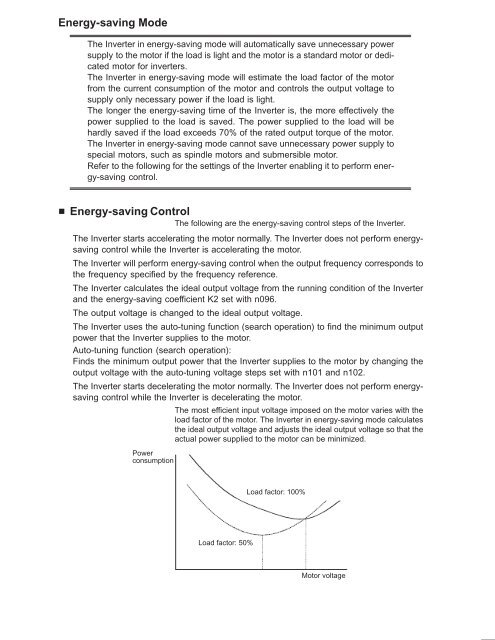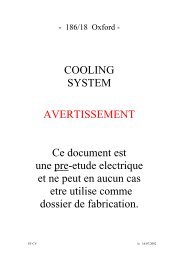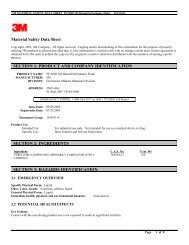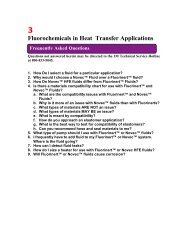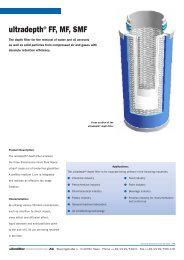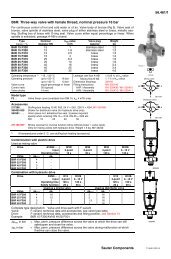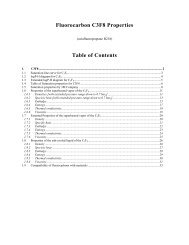OMRON Sysdrive 3G3HV - Detector Cooling Section
OMRON Sysdrive 3G3HV - Detector Cooling Section
OMRON Sysdrive 3G3HV - Detector Cooling Section
Create successful ePaper yourself
Turn your PDF publications into a flip-book with our unique Google optimized e-Paper software.
Energy-saving Mode<br />
The Inverter in energy-saving mode will automatically save unnecessary power<br />
supply to the motor if the load is light and the motor is a standard motor or dedicated<br />
motor for inverters.<br />
The Inverter in energy-saving mode will estimate the load factor of the motor<br />
from the current consumption of the motor and controls the output voltage to<br />
supply only necessary power if the load is light.<br />
The longer the energy-saving time of the Inverter is, the more effectively the<br />
power supplied to the load is saved. The power supplied to the load will be<br />
hardly saved if the load exceeds 70% of the rated output torque of the motor.<br />
The Inverter in energy-saving mode cannot save unnecessary power supply to<br />
special motors, such as spindle motors and submersible motor.<br />
Refer to the following for the settings of the Inverter enabling it to perform energy-saving<br />
control.<br />
Energy-saving Control<br />
The following are the energy-saving control steps of the Inverter.<br />
The Inverter starts accelerating the motor normally. The Inverter does not perform energysaving<br />
control while the Inverter is accelerating the motor.<br />
The Inverter will perform energy-saving control when the output frequency corresponds to<br />
the frequency specified by the frequency reference.<br />
The Inverter calculates the ideal output voltage from the running condition of the Inverter<br />
and the energy-saving coefficient K2 set with n096.<br />
The output voltage is changed to the ideal output voltage.<br />
The Inverter uses the auto-tuning function (search operation) to find the minimum output<br />
power that the Inverter supplies to the motor.<br />
Auto-tuning function (search operation):<br />
Finds the minimum output power that the Inverter supplies to the motor by changing the<br />
output voltage with the auto-tuning voltage steps set with n101 and n102.<br />
The Inverter starts decelerating the motor normally. The Inverter does not perform energysaving<br />
control while the Inverter is decelerating the motor.<br />
The most efficient input voltage imposed on the motor varies with the<br />
load factor of the motor. The Inverter in energy-saving mode calculates<br />
the ideal output voltage and adjusts the ideal output voltage so that the<br />
actual power supplied to the motor can be minimized.<br />
Power<br />
consumption<br />
Load factor: 100%<br />
Load factor: 50%<br />
Motor voltage


